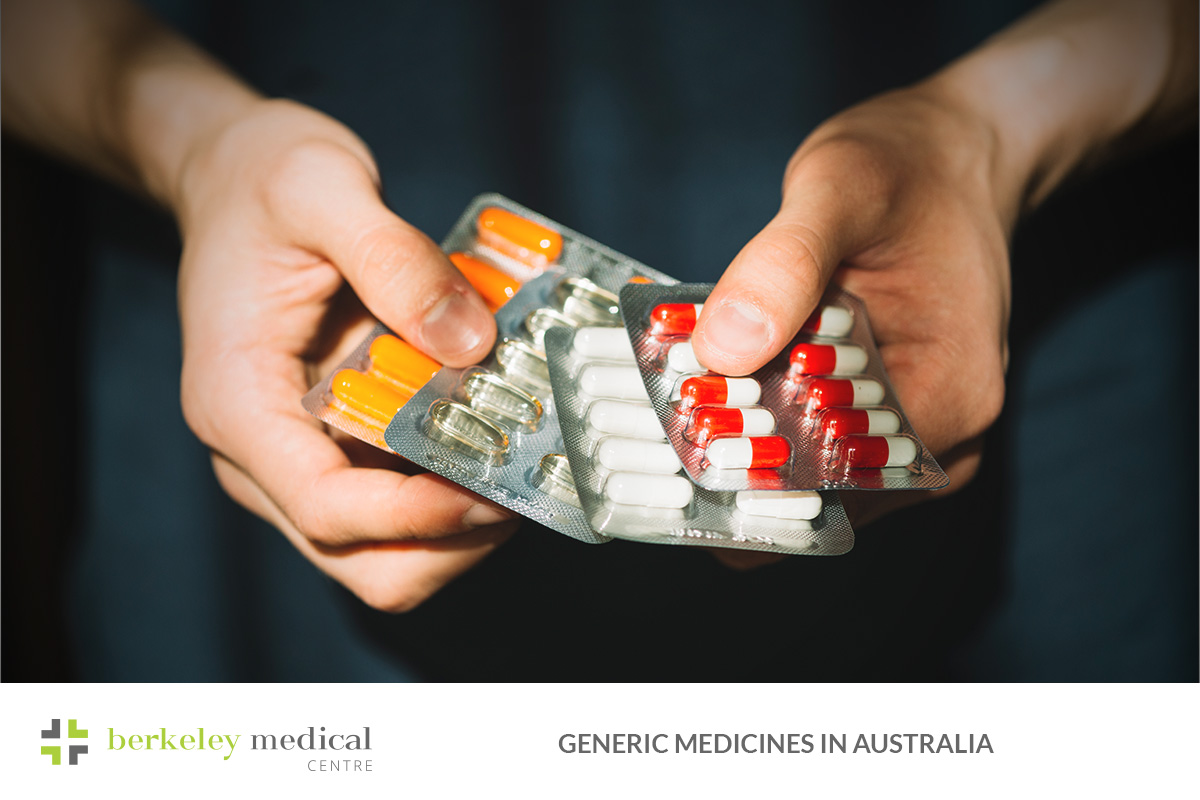When you visit your GP, you may receive a prescription that offers more than one option. Some medicines are sold under brand names, while others are available as generic medicines. Patients often ask about the differences between these choices and what to consider when selecting one.
This article explains how generic medicines throughout Australia are developed, what they contain and how they fit into the healthcare system. It also covers factors you may want to discuss with your GP or pharmacist before making a decision.
What Are Brand-Name Medicines?
Pharmaceutical companies create brand-name medicines after investing in research and clinical trials. These medicines receive a unique brand name and are protected by patents. During the patent period, only the original company can sell the medicine.
Once the patent expires, other manufacturers can produce generic medicines containing the same active ingredient. This is why patients pharmacies often see both brand-name and generic versions on the shelf.
What Are Generic Medicines?
Generic medicines become available after the brand-name version loses its patent. They:
- Contain the same active ingredient as the original medicine
- Aim to provide the same dose and therapeutic effect
- Must meet the regulatory standards set by the Therapeutic Goods Administration (TGA)
You will find it in many common forms, such as tablets, capsules, creams, ointments, liquids, patches, inhalers and eye drops.
How Do Bio similar Medicines Fit In?
Some medicines are biological, meaning they come from living cells or organisms. When the patent on a biological medicine expires, manufacturers can produce biosimilarmedicines. These medicines are assessed by the TGA and are intended to provide similar outcomes to the original product.
What Is an Active Ingredient?
The activeingredient is the part of a medicine that produces its intended effect. For example:
- Paracetamol is commonly used for pain relief and reducing fever
- Atorvastatin is prescribed to help lower cholesterol
Both brand-name and generic medicines contain the same active ingredient in the same strength.
Do Generic Medicines Contain the Same Ingredients?
Generic medicines and brand-name medicines share the same active ingredient. However, they may differ in inactive ingredients, such as fillers, coatings or colourings. These changes can alter the medicine’s appearance, taste or packaging.
In pharmacies, it often look different from the brand-name versions in terms of shape, size, colour or packaging. These differences arise from trademark laws but do not alter the active ingredient itself.
How Does Australia Regulate Generic Medicines?
The TGA regulates all medicines in Australia, including those supplied in Queensland. Before approval, generic medicines must demonstrate bioequivalence with the brand-name medicine. This means they need to:
- Deliver the same amount of active ingredient
- Work in the same way
- Provide comparable therapeutic outcomes
Why Do Generic Medicines Often Cost Less?
Generic medicines are usually more affordable for several reasons:
- Manufacturers do not repeat the original research and development
- Marketing expenses are lower
- Multiple companies can compete to make the same medicine
The Pharmaceutical Benefits Scheme (PBS) subsidises many generic medicines, making them more accessible for patients across Australia.
How Can You Choose Between Generic and Brand-Name Medicines?
When choosing between brand-name and generic, patients often consider:
- Cost: Generics are usually less expensive
- Consistency: Some patients prefer using the same brand to avoid confusion
- Allergies: Inactive ingredients can vary and may affect those with sensitivities
- Medical advice: For certain conditions, such as epilepsy, healthcare providers may recommend not switching brands
If you live in Queensland, your GP or pharmacist can help you understand the options available for your prescriptions.
How Do You Request a Generic Medicine?
If you would like a generic medicine, you can:
- Ask your GP to prescribe a generic version
- Ask your pharmacist if they stock an alternative brand
In some situations, healthcare providers may advise against switching, so it is always best to confirm before making changes.
What Is Active Ingredient Prescribing?
In Australia, prescriptions now list the active ingredient rather than just the brand name. This system:
- Helps patients identify medicines with the same ingredient
- Reduces the risk of accidentally taking multiple versions
- Makes comparing medicines easier
- Encourages affordable options through generic availability
This approach is already widely used medical centres and pharmacies.
Myths About Generic Medicines
Patients sometimes hear myths about generic medicines. Common examples include:
- Believing generics are weaker, even though they use the same active ingredient
- Assuming generics are unsafe, despite undergoing the same TGA approval process
- Thinking generics do not work as well, even though they must show bioequivalence before being supplied
Conclusion
Generic medicines play an important role in healthcare in Brisbane, Queensland and across Australia. They become available when brand-name patents expire and they give patients additional treatment options at a generally lower cost. If you want to explore whether a generic version is available for your prescription, you can discuss it with your GP or speak directly with your local pharmacist.
Also Read:







